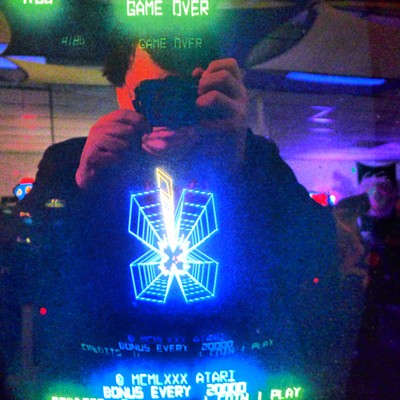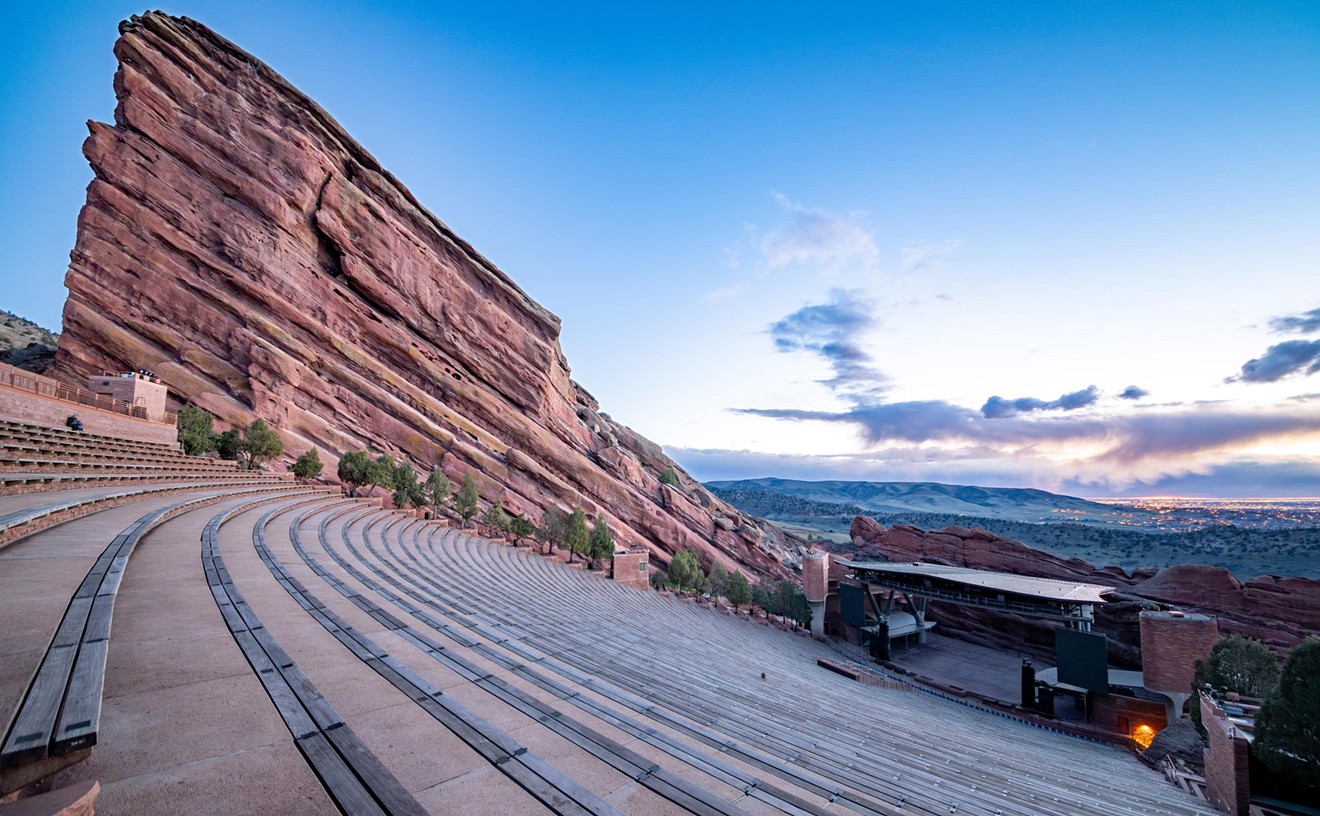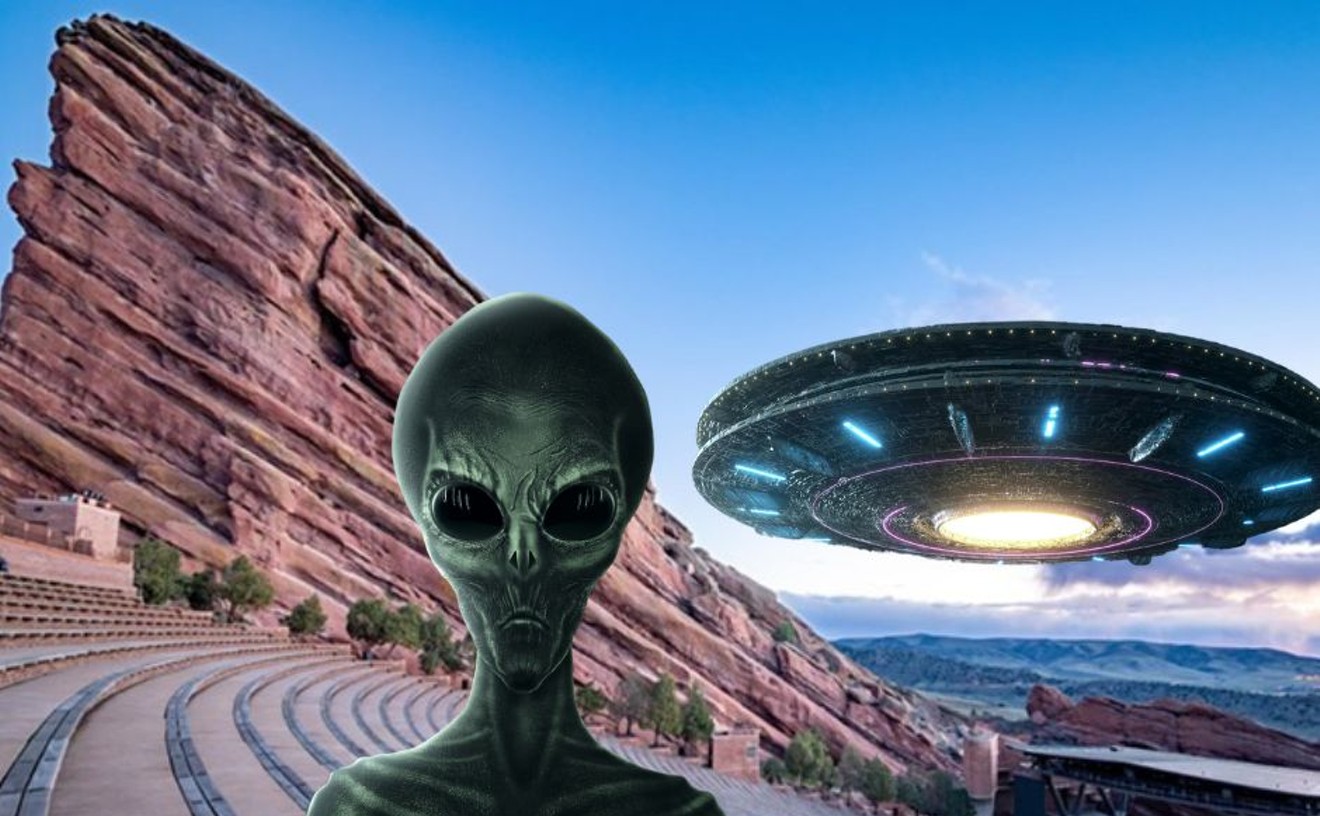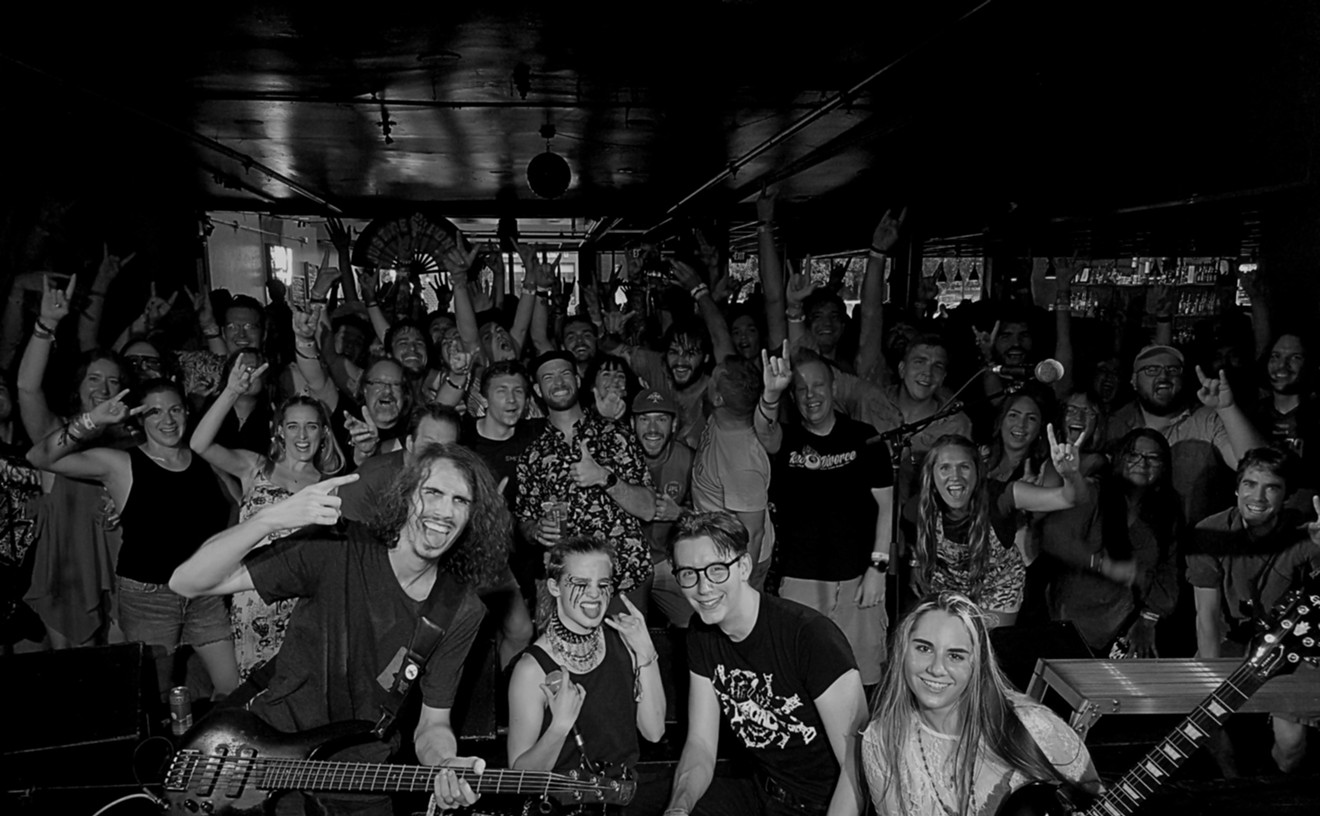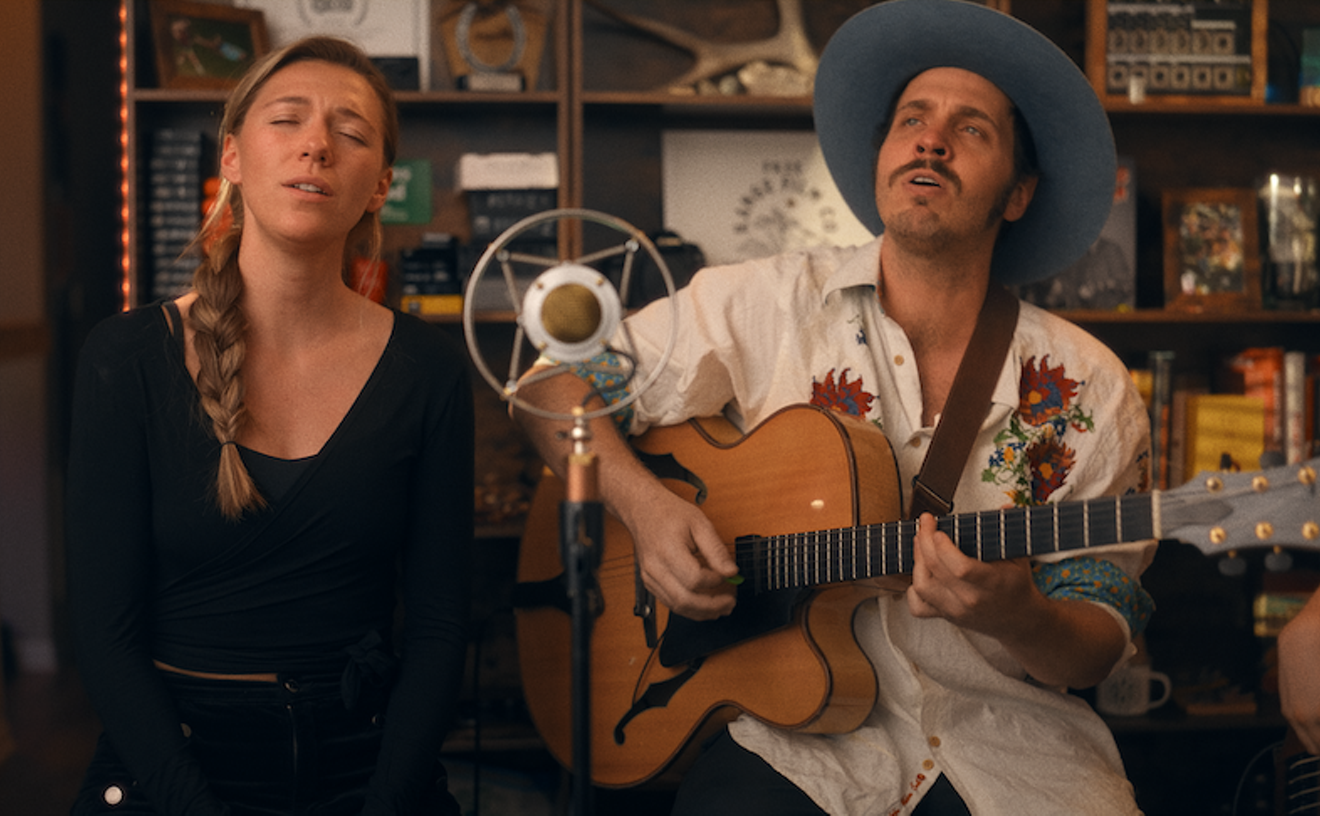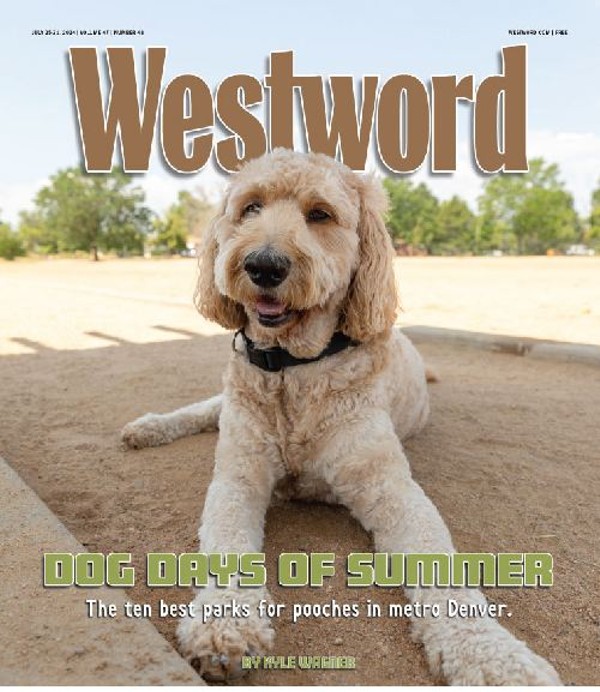Emerging from the no-wave scene in the New York underground in 1982, Swans became known for music that was forbidding, terrifyingly intense in its execution and lyrically uncompromising in its depiction of the darker side of human existence. Although an influence on industrial music and much of post-punk thereafter, Swans was like no other band. The musical brutality contained within its electrifying, visceral delivery contained a kernel of transcendence.
It was that character of the music that remained even as the band evolved its material in a more accessible but no less raw direction. The music of the later Swans was, paradoxically, often much more pretty than the music heard on, say, 1986's Holy Money, but it was just as deeply haunting and harrowing. Swans parted ways in 1997 following the tour for its final studio album, Soundtracks for the Blind.
Michael Gira, the band's leader, performed in Angels of Light, which was a marked departure from the sheer volume and density of the music of Swans. In 2009, Gira announced he would be putting the band back together, and in the fall of 2010, My Father Will Guide Me Up a Rope to the Sky was released to no small critical acclaim, and Swans embarked on a series of tours, including its current North American outing with a stop tonight in Denver at the Summit Music Hall. We recently had a cordial chat with the erudite and playfully witty Gira about the new album, its imagery, and his stint as the second bass player in the early incarnation of Swans.
A lot of the material on the new Swans record first saw a recorded form on your solo album, I Am Not Insane. What was it about that material that you felt should be reworked into songs done by Swans?
Michael Gira: I Am Not Insane is a handmade thing I did and made a thousand copies of in order to raise the funds to record [the new Swans] album properly. The thousand sold out in eight days or something like that. Then I had to reckon with making them all. I thought it would happen in six months to a year. When they sold out right away, I had to make all of these things, and it's a really laborious process. It took a few months to fulfill all the orders because it was very time-consuming, and I was recording it simultaneously. I'm not complaining. It helped me make this record.
It wasn't about the material. It was more that I wanted to make sounds again that were completely overwhelming, transcendent and very electric. That's something I did with Angels of Light. I had these songs I had written, and I presumed they were going to be an Angels of Light record. My heart wasn't really into doing another one, so I decided, "I'm going to do a Swans record."
This record is sort of a transition, because I made the songs into Swans songs. A couple of the songs on the record were written with the Swans in mind -- namely, the first one, "No Words/No Thoughts," and "Jim." The other ones were just sort of hanging around, and I arranged them with my cohorts in a Swans-like way. The next album we do will be specifically intended to be a Swans album, so it'll be a lot different.
You used sales of that album to help finance the new Swans record. Why did you go that route, and what kind of response were you expecting from such an approach?
I had no idea what to expect. I actually did this several years ago to record an Angels of Light album. I handmade 500 CDs of some live performances and posted them on the website in order to raise the money to make the next Angels of Light record. So I had in the back of my mind that that works. The reason I did it was because I didn't have the money to record a Swans album properly.
Looking at the personnel that recorded for this album, I see a number of Swans alumni. Was it at all a challenge to get some of those guys back in to work on the album and tour?
Not at all. Everyone was completely excited to do it. Norman [Westberg], of course, is the big fish because he was in Swans from the very, very early days. We hadn't spoken in any extensive way in sixteen years or something. But I saw him recently, a year and a half or so. I did a solo show in New York and he came. We got along great, and that was nice, so I put in the back of my mind that maybe something could work out with Norman in the future. I contacted him when I decided to do this, and he was completely enthused, so that worked out well. Everyone else I've been working with in Angels of Light -- periodically, anyway.
Did you approach Jarboe about being involved?
No. We had an intensely personal relationship, which was part of her being in Swans. Once we weren't together anymore and Swans had broken up, we didn't have contact anymore because we split up. It didn't seem appropriate for the direction I wanted to go. And opening that whole can of worms was just inappropriate, and I think it would have been a little silly and made the whole thing seem more like a "reunion show," or something, than I wanted it to be. Really I just wanted to open up this project again and move forward that way. I felt I was a little stymied by Angels of Light and wanted to experience the force of nature that is Swans music again.
What made you decide to get Grasshopper or Mercury Rev and Bill Rieflin of The Blackouts, er, Ministry and REM, and so forth, to perform on the record?
Grasshopper has recorded a couple of things for me recently. This Wooden Wand record, which is a really great album. James Toth is a great songwriter. Maybe the other was Larkin Grimm's record. We live near each other. I live up near Woodstock, in sort of the same area, and I got to know him a little bit. I needed some mandolin so I called him.
Bill Rieflin I've been working with for years. He played drums in Swans on one record, [The Great Annihilator], and he's played on several Angels records. Bill and I are good friends, and when I get Bill involved, I don't have in mind any particular thing for him to play. He can play so many instruments, and he has a great sensibility that matches mine in a way.
I just bring him in, I put up a song -- I didn't even send him any of the songs -- and said, "I had this in mind, what do you think?" And he says, "Yeah, I'll just do this." So he decided to play piano on a song, or sing on a song or play guitar, and he always adds something with his inimitable personal stamp on it, and it always benefits the project.
Listening to "Look at Me Go" again last night, it struck me that it would have been the perfect score for the Lars Von Trier movie Anti-Christ. What kind of moods, emotions and themes were you exploring in that song?
The sex scenes, huh?
Or some of the really crazy, quasi-mystical scenes.
Those were beautiful. I'm really disappointed in Lars Von Trier, though. He made some movies that were incredibly compassionate and poignant, like Breaking the Waves -- or even The Idiots had a really poignant ending. Of course Dancer in the Dark was killer. So devastating and emotionally profound. Then he starts making these really cynical, kind of gratuitous films like that horrible one with Nicole Kidman [Dogville]. Then, in this one, I thought it had some moments, but it seemed like, "Oh, my God, I don't give a shit." Really bad.
People were telling me it was the best movie they saw last year. I liked the mood of it, but I don't think it's one of his better movies.
I felt no empathy for the characters whatsoever. Breaking the Waves: You just want to jump off a cliff. The compassion in it is just incredible. Anyway, [Anti-Christ] was a huge disappointment. I would love to have my music be in a soundtrack. I wish someone would bring it to the attention of the Coen Brothers or Scorsese.
I explored just my imagination as it arrived. I didn't think, "Here, I want to illustrate what it's like to be incredibly angst-ridden." I don't think that way. I just follow, sonically, what's interesting to me. In the back of my mind, there's an emotional corollary, but I don't really think that way. The future direction of the Swans, if you can imagine it, is going to be more like that CD, in that there will be very long, evolving songs.
I'm going to record the band doing long pieces of music and take them and not look at them as songs but start orchestrating them, cutting them up, moving them around and making them into long, filmic pieces, rather than the current record, where there are long things like that but short songs, as well.
I might insert short songs as vignettes. Live, now, the set illustrates that future path. There are a couple of songs that are 25, 35 minutes long now. [laughs] I think there are three or four places where an audience, if they choose to do so, might applaud.
What was it about the artwork of Beatrice Pediconi that struck you enough to ask her to do the artwork for My Father Will Guide Me Up a Rope to the Sky?
Oh, that's simple. I subscribe to Harper's magazine, and they did a four-page spread with her art in it. I was stunned by it. It's like everything; it's serendipitous. I happened to be thinking, "I need some art." I saw that and thought, "Well, I'm kind of intimidated because she's in Harper's." I contacted her, and she turned out to be super-nice. She didn't know the music, but once we went on tour, she has become a great fan and come to my shows in both Italy and New York.
You did the drawings for the special edition?
I did a book of drawings. I took a few of those and put them in there. My book of drawings is also called I Am Not Insane. That's also on the website.
Is there a significance of "No" being on the front and "Yes" being on the back?
I have no idea [laughs]. Let's see, the unresolved flux between positive and negative forces, I suppose [laughs].
Or to the words "Music was the love of my life" around the devil head and "There is an entire universe out there waiting..." around a hand displaying both the middle finger and stigmata?
Go to my website, and you can see all the illustrations large size and see what they are. I think it all fit in the circle behind the CD. [laughs]
When you talked to Kayla Guthrie of Interview magazine, I thought it was interesting that you said the music you're making now aren't really songs so much as some other kind of experience. Could you elaborate on that?
Oh, Andy Warhol's magazine? He's dead, you know. [laughs] Some of the songs on the record are songs, per se, but live, it's really something else. It's more of a physical/spiritual experience. The songs are the vehicle, and we're expanding them and making them into a physically arduous and demanding event to perform.
I think the same goes for the audience, in the way they experience them. It's really trying to both bring out the violence in the moments and erase the moments. It's kind of a jazz notion, isn't it? You try to destroy yourself with the sound and be consumed by it and allow yourself to follow it rather than the other way around.
Have you ever heard of this great improv group called the Necks? You should check them out. I just discovered a couple of things on YouTube. They're opening for us in Australia. They're a three-piece. Live, anyway, they're a pretty standard jazz thing of double bass, piano and drums. They use a lot of repetition. Some of their stuff is like Steve Reich or Terry Riley or something, and improvising with that notion of gradually shifting patterns.
It's really something else. I saw them at a festival in Knoxville when I played a festival there. I didn't know who they were, but I had to sit down and watch them. I was utterly blown away. They had a really great quote, which kind of describes how I feel about my music, too: "Try to find a way to let the music take over and not impose your will on it." Or at least your immediate prejudices. That actually happens a lot, particularly for a lowly rock band like Swans. That's what it's about, really. I think that's what audiences often want--the transcendence that that implies.
That festival was called Big Ears. The promoter, Ashley Capps, he promotes Bonaroo. He happens to be one of the rare big commercial promoters who's a big fan of music. He's really knowledgeable about experimental music, jazz, rock, everything. He's an enthusiast, and he started this festival in Knoxville where he brings disparate people together. He brought Philip Glass, Antony and the Johnsons, myself, the Necks. We were all at the same festival on the same stage. We all played the same stage, not at the same time. It's that kind of diversity he accomplished with that festival.
The color red can be found in some songs on the album, too, when you talk of "the scarlet breeze," "red mouth," "the red leper" and stardust being yellow and red. Does that color hold a special significance for this album seeing as the special edition artwork front and back is in red as well?
I wasn't aware of that until you just mentioned it, but I suppose it must. Oddly, I'm reading an annotated version of the Brothers Grimm stories right now and the color red occurs a lot in those: the redness of the snow, red blood on the handkerchief. I guess it's the color of regeneration and fecundity. So I don't know; maybe that's how I mean it.
What got you interested in playing the bass early on in your career, and what is it that you found most interesting and rewarding about playing guitar and all the other instruments you've been more known for since?
I'm not a good instrumentalist, by any means. I'm not at all. I started playing the bass, I think, because it was the easiest to make a sound with it. Not to play it well, by any means. That might be one reason why the Swans sounded the way it did, because I couldn't play it in the normal way, so I invented these chords, which we called "the staircase chords" or "the Devil's chords." They're really just...you had an octave thing, and say you played an "A" and on the "D" string; you played two frets up from where you are, and then I fill in the difference on the half step. So it's this really atonal, kind of grating sound.
You have the two octaves, which are very resonant, then you have the other tone that makes for this really grinding, visceral sound. And I moved that chord up and down the neck for whatever song we were playing. That's how we came up with the basic patterns for the songs. They certainly weren't songs, but whatever they were.
And guitar? I learned that because I wanted to do something different than the really heavy stuff that Swans was doing. So I just dove in and figured out how to do what I do on the guitar, which is not a normal way of playing or, by any means, accomplished at all. Then I rely on the advanced musical acumen of my friends and cohorts to develop the songs. I kind of guide where I want them to go, but they put that in a more musical way than I would know how to describe.
Swans with Wooden Wand, 8p.m., Tuesday, February 22, Summit Music Hall, $25, 303-487-0111, 16+
Follow Backbeat on Facebook and on Twitter at @Westword_Music.


